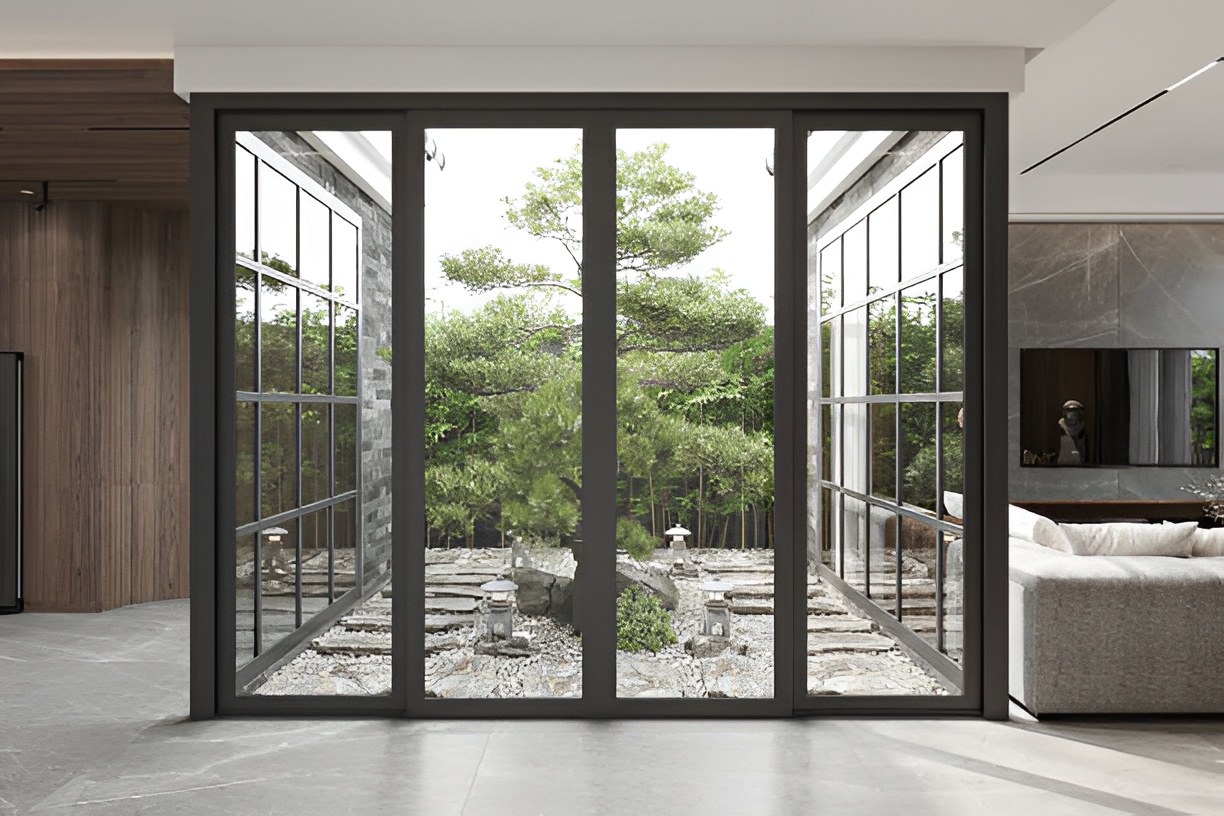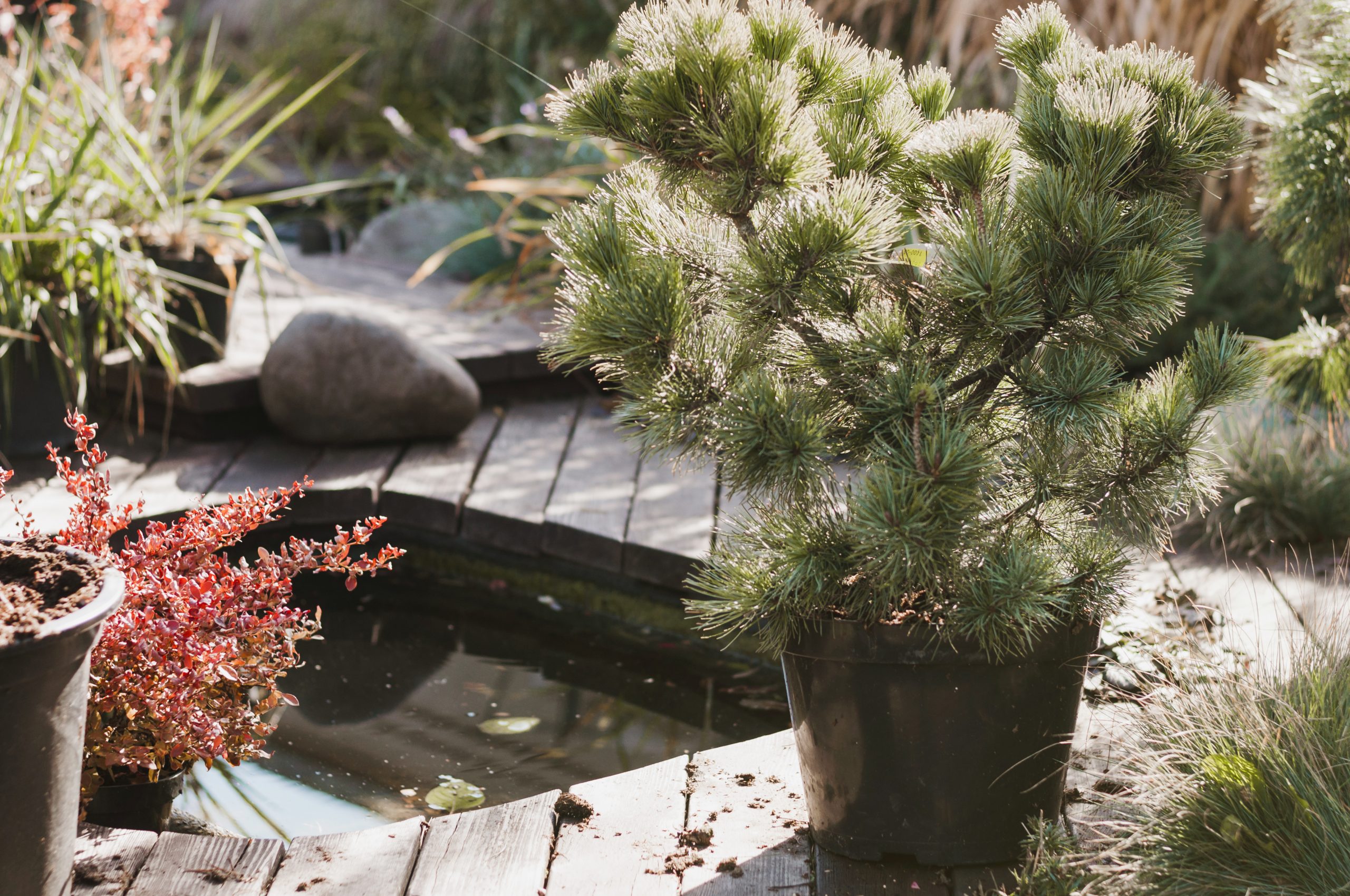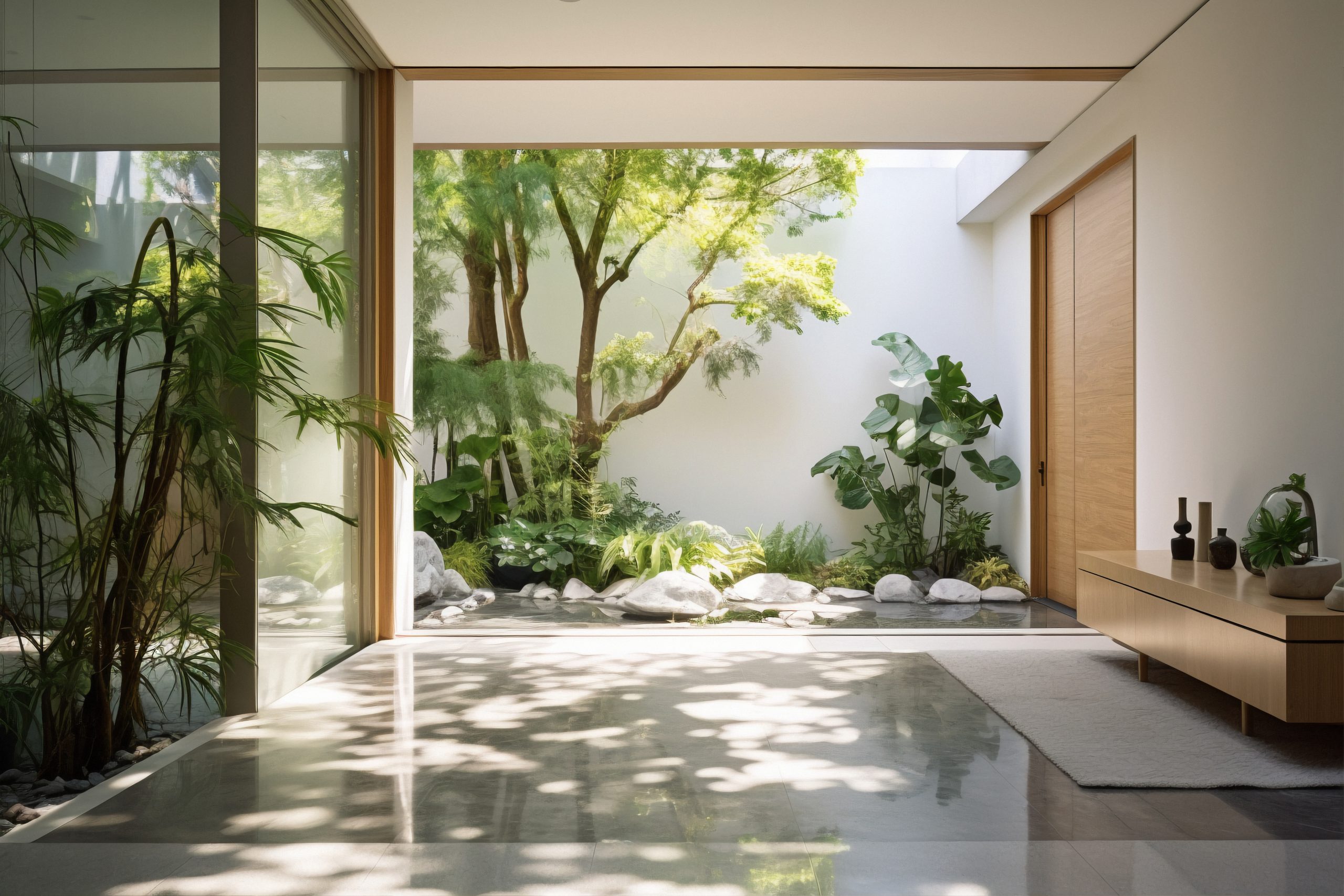-
Japanese gardens combine simplicity, natural materials, and seasonal beauty to create a peaceful and harmonious outdoor space.
-
Careful planning is essential: assess your space, choose a style, set a budget, and visualize focal points for balance and flow.
-
Key features like rocks, water elements, and thoughtfully selected plants are central to achieving traditional aesthetics.
-
Blending Japanese garden elements into modern homes requires attention to clean lines, functional spaces, neutral colors, and layered textures.
-
Avoid overcrowding, neglecting maintenance, or misplacing focal points to preserve the garden’s serenity and harmony.
-
Modern technology and smart irrigation can enhance convenience without compromising the traditional look and feel.
-
Personal touches and creative use of small spaces help make the garden uniquely suited to your lifestyle while maintaining mindfulness and beauty.
Japanese gardens are timeless symbols of harmony, balance, and serenity. Their calming aesthetics have inspired homeowners worldwide, and the growing interest in incorporating these traditional elements into modern homes shows no signs of slowing down. But how can you create a Japanese garden that honors tradition while fitting seamlessly into a contemporary setting? In this guide, we’ll explore the principles, design ideas, and practical tips for blending the best of both worlds.
Why Japanese Garden Design Appeals to Modern Homeowners
The appeal of Japanese gardens lies in their simplicity and thoughtful composition. Unlike typical landscaping trends that focus on bold colors or high-maintenance plantings, Japanese gardens emphasize natural forms, subtle beauty, and mindfulness. Homeowners often choose this style for its ability to create a peaceful retreat in the midst of busy modern life.
Some of the key elements that make Japanese garden design so desirable include:
-
Natural materials: Stone, wood, and gravel are used to mimic natural landscapes.
-
Water features: Ponds, streams, or small waterfalls create gentle soundscapes.
-
Minimalist planting: Carefully selected trees, shrubs, and moss enhance harmony without overcrowding.
-
Seasonal beauty: Japanese gardens are designed to highlight changes throughout the year, such as cherry blossoms in spring and maple leaves in autumn.
How to Start Planning Your Japanese Garden

Before buying plants or laying stones, it’s important to plan carefully. A well-thought-out plan ensures your garden looks intentional rather than random. Planning also helps balance traditional aesthetics with modern practicality. Consider the following steps in detail:
Assess your space:
Start by measuring your yard and taking note of natural features like slopes, sunlight exposure, and soil type. Determine areas that receive morning versus afternoon sun, which will influence plant selection. Notice any existing trees, rocks, or structures that can be incorporated into the garden’s design rather than removed. Even small changes in elevation can be used to create interest or guide pathways.
Decide on your style:
Japanese gardens have several styles, each evoking different moods:
-
Zen gardens (karesansui): Minimalist rock and gravel layouts for meditation and calm.
-
Stroll gardens (kaiyū-shiki): Winding paths, ponds, and bridges that encourage movement and discovery.
-
Modern interpretations: Simplified forms, container gardens, or mixed materials that blend traditional elements with contemporary architecture. Consider your lifestyle and how much time you want to spend maintaining the garden.
Set a budget:
A Japanese garden can be as simple as a gravel corner with a bonsai or as elaborate as a full-scale pond with bridges, lanterns, and stone pathways. Allocate funds for hardscape materials (rocks, gravel, paving), water features, plants, and professional help if needed. Planning ahead prevents costly surprises later.
Visualize focal points:
Focal points are central to creating balance. Rocks, lanterns, bonsai trees, or even small sculptures can guide the eye and create harmony. Sketch or use software to experiment with placements, keeping in mind that every element should feel intentional and proportional to the space.
Key Features of a Japanese Garden
Stones and Rocks: The Foundation of Balance
Rocks symbolize permanence, stability, and nature’s raw beauty. In Japanese gardens, they often represent mountains, islands, or abstract ideas like strength and endurance. To incorporate rocks effectively:
-
Group rocks in odd numbers: Arrangements of three or five rocks feel more natural than pairs or even numbers.
-
Vary sizes and textures: Use tall, upright stones for vertical interest and flat stones for paths or seating.
-
Integrate moss or groundcover: Moss softens edges and adds a sense of age and tranquility. Even low-growing plants like ferns or dwarf grasses can complement the rocks.
-
Create layers: Place rocks strategically to guide movement and create depth, ensuring pathways naturally flow around these focal points.
Water Elements: Bringing Tranquility
Water adds movement, sound, and life to Japanese gardens. Even small-scale water features can transform a garden’s atmosphere:
-
Koi ponds: Introduce vibrant fish and reflections, bringing life to still spaces.
-
Bamboo water spouts (shishi-odoshi): Produce gentle, rhythmic sounds that enhance serenity and calm the mind.
-
Dry rock streams and gravel rivers: For minimalist gardens, gravel and stones mimic the visual effect of flowing water without the upkeep of a full pond.
-
Small waterfalls or fountains: Integrate these into modern layouts to maintain balance between traditional aesthetics and contemporary design.
Plant Selection: Embracing Simplicity and Seasonality
Plants are chosen for texture, shape, and seasonal interest rather than sheer volume. This approach emphasizes natural beauty and mindfulness:
-
Maple trees: Offer stunning autumn foliage and sculptural forms.
-
Cherry blossoms: Provide vibrant spring color and a sense of celebration.
-
Azaleas and camellias: Add year-round greenery and seasonal flowers.
-
Moss and groundcovers: Provide a soft, lush appearance that contrasts with rocks and gravel.
For modern homes, consider blending traditional Japanese plants with hardy, low-maintenance perennials. This creates a garden that is both beautiful and practical, reducing the time needed for upkeep while keeping the traditional essence intact.
How to Make a Japanese Garden Work in a Modern Home
Blending Japanese garden elements into modern homes is all about balance. You want a space that complements clean architecture while maintaining the calming, natural atmosphere of traditional gardens.
-
Keep lines clean: Modern homes favor geometric forms. Use rectangular planters, straight gravel paths, or neatly edged lawns to maintain this aesthetic.
-
Integrate functional spaces: Include seating areas, small patios, or tea corners. These spaces allow for relaxation or entertaining without disrupting the minimalist look.
-
Use neutral colors: Grey stones, white walls, natural wood, and subtle greens provide a soothing backdrop while letting garden features stand out.
-
Layer textures: Combining smooth stones, rough gravel, moss, and soft shrubs creates depth, interest, and contrast without overwhelming the eye.
-
Mind scale and proportion: Large modern homes can support bigger rocks or ponds, while compact urban gardens benefit from smaller-scale features like bonsai or miniature bridges.
Common Mistakes to Avoid
Even well-planned gardens can fall short if certain mistakes are made:
-
Overcrowding: Too many plants, ornaments, or water features can overwhelm the space and disrupt harmony. Less is often more.
-
Ignoring maintenance: Pruning, cleaning water features, and checking soil health are crucial. Neglect can quickly diminish a garden’s beauty.
-
Misplacing focal points: Each element should guide the eye or create balance. Randomly placed objects can make a space feel cluttered.
-
Forgetting harmony with architecture: Your garden should complement your home, not clash with modern lines or color schemes.
Practical Tips for Maintaining Your Japanese Garden

Maintaining a Japanese garden requires attention to detail. With the right approach, it can remain a serene, beautiful space year-round:
-
Pruning and shaping trees: Regularly shape trees to maintain their intended forms. Preventative tree care tips help minimize disease, encourage healthy growth, and preserve the visual balance of the garden.
-
Monitor water features: Avoid stagnation and algae buildup by using small pumps or filtration systems. Regular cleaning ensures water features remain clear and inviting.
-
Mulch and gravel maintenance: Mulching reduces weeds and preserves soil moisture, while raking gravel maintains clean lines and patterns.
-
Seasonal adjustments: Swap plants or add small accents to highlight seasonal changes, enhancing the garden’s traditional emphasis on the passage of time.
Incorporating Modern Technology Without Losing Tradition
Modern tools and technologies can simplify garden maintenance while preserving the traditional feel:
-
Modern irrigation: Upgrading sprinkler systems ensures plants receive water efficiently without overwatering, and drip systems can be hidden beneath gravel or moss to maintain aesthetics.
-
Outdoor lighting: Subtle spotlights or low-level lanterns can illuminate stones, trees, and water features, extending the garden’s enjoyment into the evening.
-
Motion-sensor lights: These provide safety along pathways without detracting from the minimalist look.
-
Smart water management: Sensors can monitor moisture levels and control irrigation automatically, helping you maintain plant health while reducing water waste.
Choosing the Right Professional Help
Even if you enjoy DIY projects, consulting a professional can make a big difference. When selecting help:
-
Consider what to look for in a landscaping designer who understands Japanese garden principles and modern home aesthetics.
-
Look for experience in blending natural elements with hardscaping and contemporary design.
-
Ask for portfolios and client references to ensure they can execute your vision.
Personalizing Your Japanese Garden
One of the most rewarding parts of designing a Japanese garden is adding personal touches. Personalized landscaping allows you to create a space that reflects your lifestyle and preferences. Ideas include:
-
Custom stone arrangements that tell a story or reflect your favorite natural landscapes.
-
Seating areas or tea corners designed for relaxation or social gatherings.
-
Unique plant selections that resonate with your tastes or have sentimental value.
How to Use Small Spaces Effectively
Modern homes, especially urban ones, often have limited yard space. You can still achieve a Japanese garden by:
-
Using vertical elements like trellises or bonsai trees.
-
Installing container gardens with seasonal plants.
-
Designing narrow pathways or stepping stones to encourage mindful walking through the garden.
How Japanese Garden Design Can Improve Your Wellbeing
Japanese gardens aren’t just visually appealing—they have real mental and emotional benefits:
-
Stress reduction: The calming design encourages mindfulness and meditation.
-
Connection to nature: Even small gardens can bring natural elements closer to daily life.
-
Increased creativity: Viewing and interacting with thoughtfully arranged natural elements can inspire ideas and reflection.
Seasonal Considerations for Modern Japanese Gardens
To maintain authenticity and beauty, consider seasonal changes:
-
Spring: Plant cherry blossoms and azaleas for vibrant blooms.
-
Summer: Add shade-loving plants and maintain water features to stay cool.
-
Autumn: Highlight maples and foliage changes.
-
Winter: Use evergreens and stone arrangements to maintain structure and interest.
Budgeting for Your Japanese Garden
Japanese gardens can vary widely in cost depending on scale and materials. Some budget-friendly tips include:
-
Reusing stones or salvaging natural materials from local sources.
-
Choosing perennials over expensive annuals for long-term growth.
-
Incorporating small water features or dry rock gardens instead of large ponds.
Final Thoughts: Balancing Tradition and Modern Style
Creating a Japanese garden for a modern home is all about balance. By blending traditional elements—like stones, water, and seasonal plants—with contemporary aesthetics, you can craft a space that is both visually stunning and personally meaningful. Whether you’re seeking a meditative retreat, a beautiful view from your windows, or a functional outdoor area, the key is thoughtful planning, mindful maintenance, and personalized touches.
